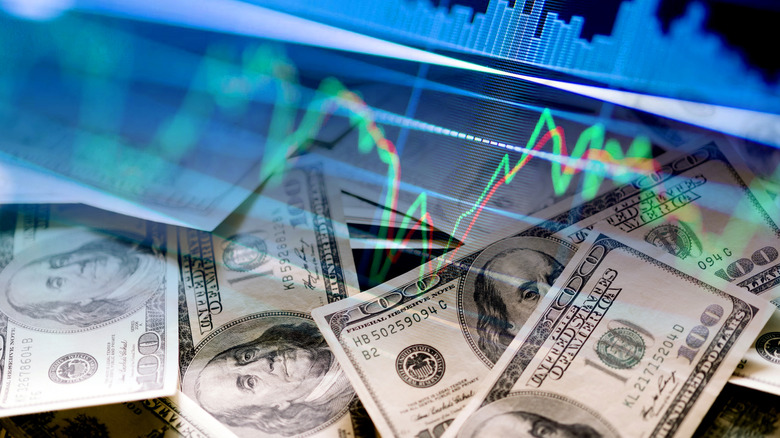Can You Live Off Investment Dividend Income? Apparently Some People Can
Most stock investors will understand the concept of a dividend. These routine payments are made to shareholders by companies as an incentive to continue holding their stock. Dividends are paid out of the profits that a brand brings in through its normal business operations and therefore are typically scheduled on a quarterly basis. Dividend investing is a sort of opposite world to the likes of index fund and ETF accumulation. Rather than chasing growth assets, investors looking to develop significant dividend payout figures will look for high-yielding dividend stocks. Dividend aristocrats are a good option here — these are stocks that have increased their dividend yield every year for at least the last 25 years.
Functionally, a trader will need to develop a well-rounded strategy to actually live off their dividends. These wealth extractions that don't require you to sell your underlying shares are an attractive source of added income, but the low payout figures (often just a few percentage points) make them well-suited to income augmentation rather than primary support. But some have crafted a different way forward. With precision research and a portfolio that chases the highest possible returns, it seems that some investors have actually built dividend-producing portfolios that can replace their income. Here's some background into how you might be able to follow their lead.
Build a steady calendar of dividend payments
Most companies that deliver dividends to their shareholders provide these payments every three months. As a result, the first rule of dividend investing for someone seeking to deliver themselves a true income stream must be diversification. Buying up shares in multiple companies that pay out dividends at different times will help you spread your income payments more evenly across the year. There's some benefit, of course, in receiving a lump sum payout in January and then again in April, July, and October, but it can be hard to budget this way, especially for those new to the concept.
Dividend investors frequently categorize their big dividend producers into three buckets. "A" dividends pay on this first schedule, "B" dividends hit shareholder accounts in February, May, August, and November; and finally, "C" dividends are paid in March, June, September, and December. This gives investors coverage across the entire calendar. As a concrete example: Common stocks that dividend investors sometimes focus on in these categories include Coca-Cola ("A"), McDonalds ("B"), and T. Rowe Price ("C"), all big name brands with good dividend yields.
Your portfolio may not see even payouts, but having some income delivered on a more routine schedule helps tremendously in managing ongoing financial commitments (like paying your mortgage and buying groceries). Naturally, this adds another wrinkle to the stock picking process, so taking time with your research is truly crucial (Nasdaq's dividend calendar can be a big help here).
Target high-yield assets above most other financials
"Good" dividend payout rates aren't always enough to underpin a true income replacement, though. A dividend yield around 4%, for instance, is a pretty nice figure, but a half a million dollar investment in dividend producers that deliver 4% nets just $20,000 in annual dividend income ($1,667 averaged per month). The only options you have as an investor are to pour more money into these companies, or change your point of focus and add high-yield selections into the mix. Another $500,000 will likely take many years to gather (although not nearly as long as your first $500,000 because of the power of compounding interest). The alternative can be implemented immediately: Shift your investments to dividend producers that pay out at an 8% rate.
REITs are a solid option in this regard. Developing passive income with the help of REIT ownership is less volatile than some other pursuits, as well. "Real Estate Investment Trusts" operate like ETFs but contain real estate properties rather than stock holdings within their coffers. REITs are legally bound to invest at least 75% of the fund's controllable assets in actual real estate, and they must pay out at least 90% of the profits to shareholders in the form of dividends. The result is an elevated dividend rate that can help you meet your targets a little easier. As a whole, REITs have also have outperformed stocks over 20, 25, and 50 year timelines (but not in shorter study periods) in terms of annualized return — something to chew on for sure.
Hardcore dividend investors may target even higher yields, but this comes with a catch
Investors fully committed to the pursuit of dividend income drop the safety of established company buys. Coca-Cola offers a quality dividend yield (3.2% annually as of January 2025) alongside an established brand name that isn't likely to lose value. However, 3.2% won't get you where you need to go to establish truly replacement-level income. Instead, hardcore dividend chasers look to specialized shares like Oxford Lane Capital's closed-end fund which pays out around 20%. Closed-end funds are typically only traded through specialized brokerage accounts that frequently charge higher fees. These investors might also target stocks that pay dividends on a monthly basis instead of quarterly. In the standard market, brands like TORM plc, BW LPG Limited, Hafnia Limited, and Ecopetrol S.A. all offer dividend yields above 20%.
Going all-in on huge dividend yields sounds like the obvious angle, but there's quite a bit more to consider for most investors. Dividends, by nature, chop out a portion of a company's profits and operating cash on a regular basis. This means that they are vulnerable to increased downward price action fairly consistently, and especially around the time of a dividend payment. Most stocks that pay massive dividends trade with a decidedly negative trend line. If you're going all in on dividends, this might not matter all that much, but selling out of these positions may be painful in the future if you every change your strategy and focus.



